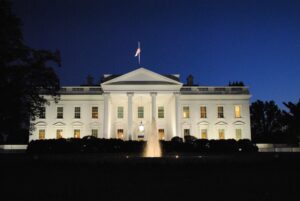
What is the President’s Authority to Modify Section 232 Import Tariffs?
Date of Publication: August 9, 2021
Does the president have the authority to modify Section 232 import tariffs? An appeals court decision recently shed new light onto this question, reversing an earlier ruling in a victory for the federal government.
The recent issues around Section 232 import tariffs date back to March 2018, when President Donald Trump imposed 25% tariffs on steel articles imported from all countries. A few months later, Trump increased this tariff to 50% specifically for steel imports from Turkey. In response to the heavy tariffs, a Turkish steel importer filed a suit, claiming that Trump’s tariff proclamation was illegal because it singled out steel importers from Turkey, while also not following mandated statutory procedures or providing a credible connection to national security.
The President’s Role in Section 232 Tariffs
According to the Trade Expansion Act of 1962, when the president receives a Department of Commerce report that a specific product is a threat to national security, the president has 90 days to:
- Determine if they concur with the report that the product is a threat to national security
- If they do deem that the product is a threat to national security, determine the nature and duration of the action needed to take against those importers so that they no longer pose a national security threat
Once the president has determined the threat and appropriate actions, they have 15 days to implement any action to address the national security threat.
The Recent Decision
However, Trump’s tariffs against Turkey raised questions about the nuances and scope of the Section 232 details in the Trade Expansion Act of 1962. When the case came before the Court of Appeals for the Federal Circuit, two of the three justices determined that:
- The Section 232 direction that the president should act within a certain timeframe does not limit the president’s ability to act after that deadline
- Section 232 permits the president to announce, along with a responsive action, a continuing course of action whose initial implementing steps may be modified if deemed necessary
One justice with the Court of Appeals for the Federal Circuit dissented, pointing out that:
- The requirement for a president to determine the duration of an action may include an open-ended series of actions that may be endlessly modified
- The requirement for the president to notify Congress within 30 days of the reasons for an action is useless to Congress if the statute permits the president to adopt a continuing plan of action that may be later changed
Additionally, the justices noted that their decision does not address circumstances other than Trump’s tariffs on Turkish steel products, and that making another decision would require a new Department of Commerce report about a new threat.
This content is intended for informational purposes. Due to the generality of this content, the provided information may not be applicable in all situations. We encourage the reader to review the most up-date-regulations directly with the U.S. government’s sources on 232 tariffs, which can be found here.
